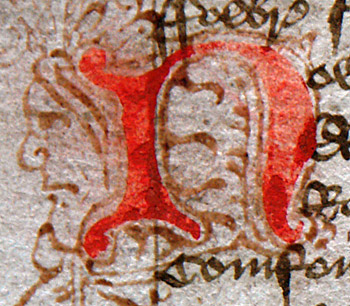Libeaus Desconus
General Information
Plot Summary

Gingelayne, Sir Gawain’s illegitimate son, is kept him away from knightly culture by his mother, who calls him ‘bewface’. One day, he finds the body of a dead knight, takes his armour and travels to Arthur’s court at Glastonbury. The King grants his request for knighthood, and, since he does not know his real name, dubs him Libeaus Desconus. He also agrees to grant his next adventure to the new knight. Shortly after, a richly dressed maiden called Elene arrives and requests a knight to rescue her mistress, the Lady of Synadowne. She and her dwarf companion reluctantly accept Libeaus as their champion but mock his inexperience as they set off. However, when Libeaus roundly defeats Sir William Delaraunche and his three nephews, sending them all back to Arthur’s court, she apologises.
They continue through the forest until they come across two hideous giants. Libeaus slays them both and rescues Violet, daughter of Earl Anctour, who rewards him richly. He sends the giants’ heads to Arthur and they proceed to the castle of Sir Jeffron, who has pledged a white falcon to any lady more beautiful than his lover. Libeaus presents Elene, and the two women are displayed in the marketplace of a nearby town. When the citizens pronounce Jeffron’s lover the fairest, Libeaus challenges him and, victorious, sends the falcon to Arthur.
They resume their journey until they encounter a former knight of Synadowne, Sir Otes de Lyle, who is hunting in the forest. After a dispute over a dog, twelve of Otes’ friends attack Libeaus, but he defeats them in a gruelling battle and sends the leader to Arthur: the king is so impressed that he makes Libeaus a knight of the Round Table. Libeaus and Elene travel on to the Yle d’Or, where Libeaus rescues the city from a Saracen giant. The lady of the city, however, is a sorceress, who uses her powers to seduce the knight. He forgets his quest for a year, but when Elene rebukes him he sets off again immediately, overcome with shame.
When they finally reach Synadowne, Libeaus fights and defeats the steward, Sir Lambard, who tells him that his lady is imprisoned by two clerks, Irayne and Mabon, in a magical palace. The next day, Libeaus enters the beautiful hall, which is made of precious stones and full of minstrels. As he approaches the dais, the music stops, the lights are extinguished and the hall begins to collapse around him. Maboun appears and challenges the knight: he fights both clerks until Maboun is slain and the wounded Irayne vanishes. As he prays, a dragon with a woman’s face approaches and kisses the terrified knight. Its skin falls away to reveal the beautiful and naked Lady of Synadowne, who declares that kissing a knight of Gawain’s kin has broken her enchantment. She offers to marry Libeaus and they return to her delighted subjects, before travelling on to Arthur’s court. They are married in a forty-day ceremony, then return to Synadowne and live happily for seven years.
From: M. Mills, ed. Lybeaus Desconus. EETS o.s. 261. Oxford, Oxford University Press, 1969.
Manuscript: London, Lambeth Palace, MS 306
Manuscripts
Click a title below to search for all romances in that manuscript.